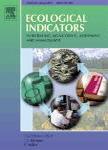版权所有:内蒙古大学图书馆 技术提供:维普资讯• 智图
内蒙古自治区呼和浩特市赛罕区大学西街235号 邮编: 010021

作者机构:Shenzhen Univ Sch Architecture & Urban Planning Shenzhen 518060 Peoples R China Shenzhen Univ State Key Lab Subtrop Bldg & Urban Sci Shenzhen 518060 Peoples R China
出 版 物:《ECOLOGICAL INDICATORS》 (Ecol. Indic.)
年 卷 期:2025年第170卷
核心收录:
学科分类:0710[理学-生物学] 0830[工学-环境科学与工程(可授工学、理学、农学学位)] 07[理学] 09[农学] 0713[理学-生态学]
基 金:Shenzhen Science and Technology Program Shenzhen University [2035, 2022B005]
主 题:Biodiversity Rare and endangered species Climate change Land cover change Scenario simulation
摘 要:Biodiversity, essential for sustainable development, faces threats from climate and land cover changes, which are the primary drivers of biodiversity loss. While previous studies have proposed approaches to identify priority protected areas (PPAs) for biodiversity conservation and simulated regional biodiversity responses to climate change or land cover change, however, they often fail to accurately identify PPAs and neglect the combined effects of climate and land cover changes on biodiversity. This study fills these gaps by proposing an integrated modeling approach with MaxEnt, InVEST, and Zonation to identify PPAs by prioritizing rare and endangered species, and exploring the spatial-temporal dynamics of these PPAs under the combined effects of climate and land cover changes from 2020 to 2050 by predicting land cover dynamics under the shared socioeconomic pathway (SSP) scenarios (SSP126, SSP245 and SSP585). Conservation gaps are revealed by spatial overlay analyses between these PPAs and existing protected areas. The spatial pattern of PPAs in Shenzhen is concentrated in the southeast with poor connectivity in the west. Primary PPAs are predominantly located in the southeast, secondary PPAs are mainly found on the periphery of the primary ones, and tertiary PPAs are scattered with limited connectivity across central, west, and northeast regions. From 2020 to 2050, biodiversity faces significant threats due to climate and land cover changes, resulting in a notable reduction in primary PPAs and increased habitat fragmentation within PPAs. In 2020, 70.19 % of the PPAs in Shenzhen were within existing PAs, with 89.66 % of primary PPAs covered. Conservation gaps are mainly in secondary and tertiary PPAs. Climate and land cover changes will diminish the effectiveness of existing PAs from 2020 to 2050. Spatial management suggestions for biodiversity conservation are proposed to mitigate challenges posed by climate and land cover changes.